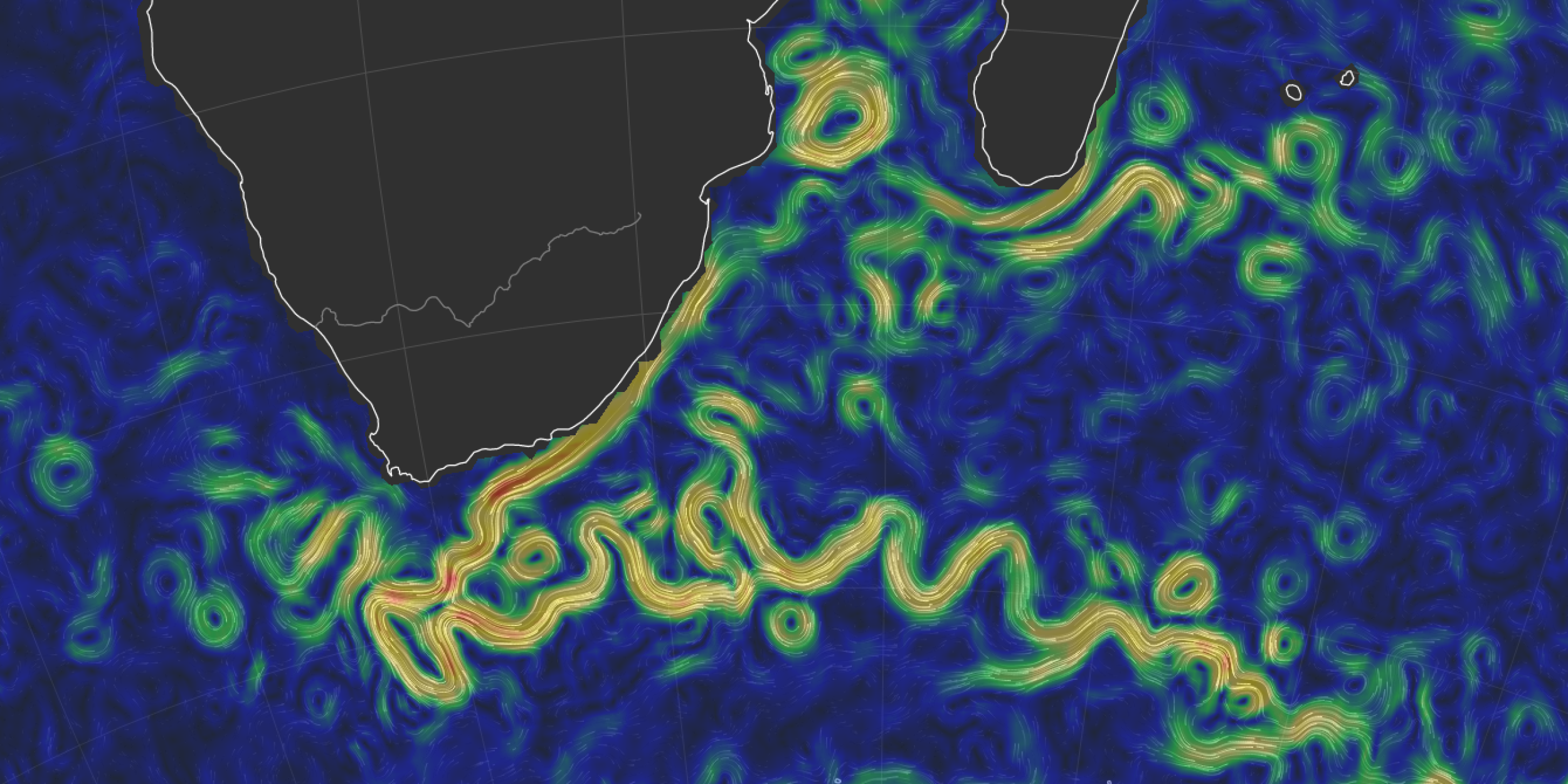
Western moving Agulhas Current located off the Eastern shore of South Africa. Source: Windy.com
South Africa is prone to precipitation changes, with drought and flooding events being common occurrences. Understanding the rainfall variability over South Africa is of great interest, as Cape Town was one of the first major cities in the world to nearly run out of water in 2018 and is home to a significant population dependent on rain-fed agriculture. South African climate variability has been linked to changes in the Agulhas system and external forcing. The Agulhas system, also known as the Agulhas Current, is a warm western boundary current of the South Indian Ocean. Located along the eastern coast of Africa, it is one of the strongest currents in the world. Research shows that convection driven by the warm Agulhas sea surface temperatures (SST) can explain precipitation patterns over eastern and northern South Africa. But what effects can a warming planet have on the Agulhas system and rainfall for South Africa?
In a new South African Journal of Science article, authors Houraa Daher and Ben Kirtman used the Community Climate System Model, a coupled climate model for simulating the earth’s climate system, and composed of four separate models simultaneously simulating the earth’s atmosphere, ocean, land surface and sea-ice, to analyze future climate change in the Agulhas system and regional precipitation variability in South Africa. Using output from one historical and three future greenhouse gas emission scenarios, it was found that an increase in convective precipitation was found over the eastern region of South Africa. However, the opposite pattern was seen over western South Africa with a decrease in convective precipitation. To summarize, when greenhouse gas emissions are not increasing rapidly, ozone recovery dominates the climate response in the Agulhas system and for South African precipitation. But when greenhouse gas emissions are increasing at high rates throughout the 21st century, the ozone recovery signal is overpowered by the greenhouse gas forcing and trends similar to those of the ozone depletion period are witnessed (see below).


The convective precipitation across 34°S shows the differences between the Ozone Recovery-Ozone Depletion periods (a–c) and Post-Ozone Recovery-Ozone Recovery periods (d–f). Results for RCP2.6, RCP4.5, and RCP8.5 are shown in the first, second, and third rows, respectively. The eastern box (EB) response is shown in blue-green and the western box (WB) in brown.
The authors note future predictions in regional climate variability are shown to be dependent on the intensity of greenhouse gas emissions and are extremely important for South Africa, a region prone to drought and flooding.
Funding for this project was provided in part by the NOAA Climate Program Office, MAPP program.
Read the full study here.



